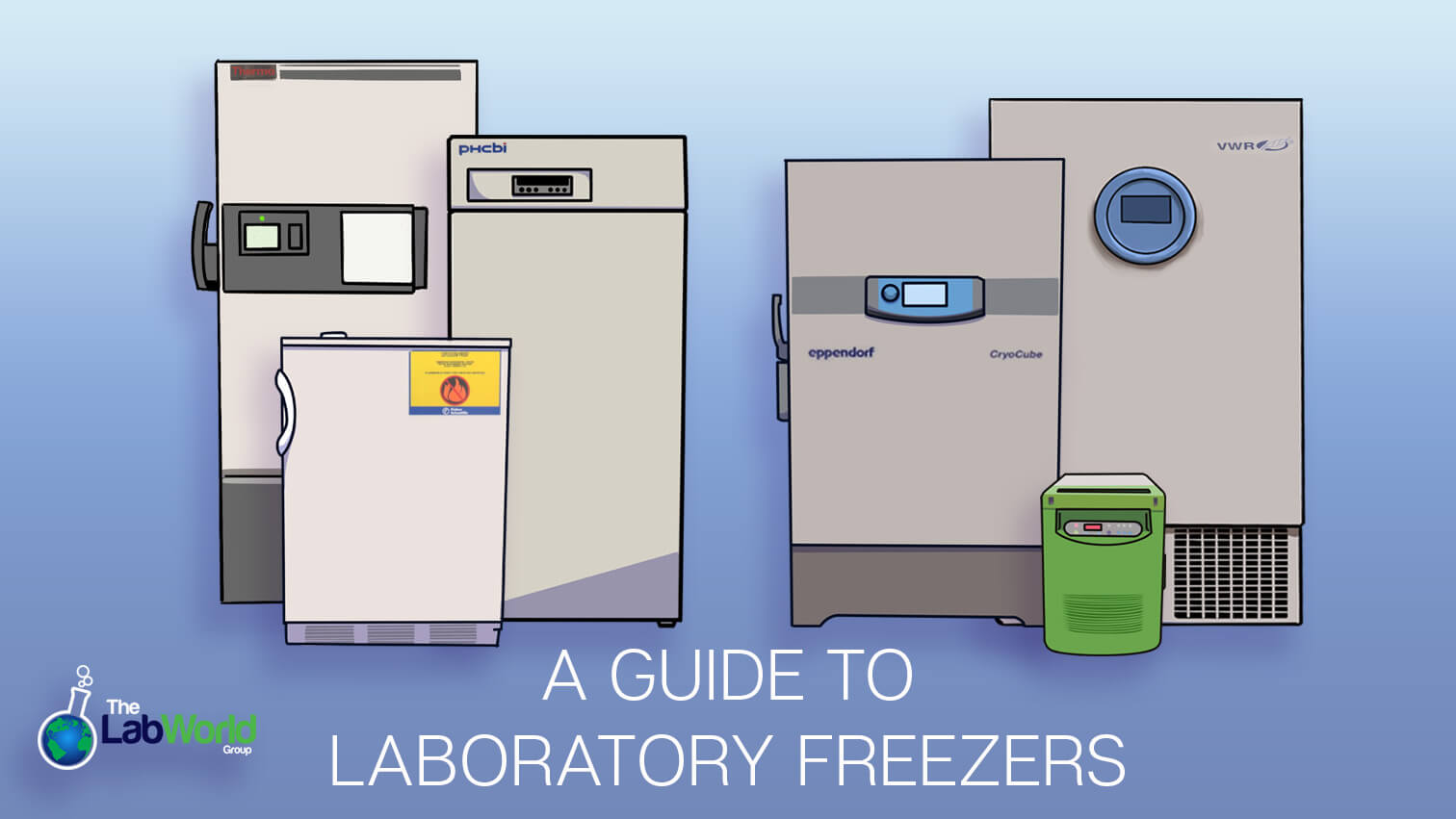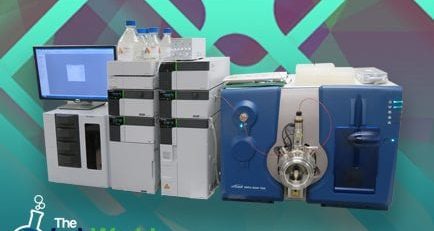
A Guide to Laboratory Freezers
Amanda2022-12-14T22:07:45+00:00Cold storage is a critical part of working in the lab. So many reagents, samples, vaccines, analytes, and reactions are temperature sensitive. The right temperature is critical, it can help slow things down, but more importantly, help in preservation for later use. However, unlike a household freezer, laboratory freezers are built to meet higher reliability and performance standards. What that looks like though can vary greatly, from cold rooms to liquid nitrogen storage, from 4C refrigeration, down to -150°C controlled rate freezers. Understanding the requirements of the samples and reagents being used in the lab is the first step to figuring out which laboratory freezer is best.
Laboratory Freezer Temperature Range: Why such a spread?
Today’s lab freezers can range in not only size, from small benchtop models up to whole rooms, but they also range in temperature. Unlike household units, these general-purpose lab freezers fall into the -20° freezer range. A -20 laboratory freezer (can also go as low as -30°C) covers most use cases in the lab and helps preserve the potency of vaccines, and prevent spoilage of samples.
The standard lab freezer temperature range however isn’t always cold enough. Low-temperature freezers hold items at around -40°C for a more robust cold solution. That may still not be cold enough, however. For these cases, and certainly, as we’ve seen this past year, the COVID vaccines, for example, require an ultra-low freezer.
Ultra-Low Temperature freezers can range from -50°C down to -86°C and represent about as cold as you can get without adding liquid cryogenics. Given how low a temperature they have to reach, the monitoring of performance and security of the samples is paramount. An ULT freezer is usually set up with continuous monitoring systems, alarms to warn of failures or deviations, maintenance routines so that they operate at top performance, have backup systems and password protections as well as remote monitoring capabilities. They are the Fort Knox of cold storage.
Once you have figured out your temperature requirements the next item to figure out is the sizing. Laboratory Freezers of all temperatures come in a variety of sizes. Some are small enough to fit on or just under a lab bench, allowing you to keep frequently needed items at your fingertips. There are even portable ultralow freezers for transporting and maintaining the cold chain of highly sensitive samples.
For more capacity, traditional upright laboratory freezers will provide adequate storage, some with compartments to hold lots of small items or to better organize samples. Most ULT freezers feature compartments with individual doors to help minimize temperature loss during openings. A chest freezer provides ample storage and is great for situations with large items, however, these drop-in freezers have no method of organization so if that’s a specific need for your lab they may not be the solution for you.
Specialty Purpose Lab Freezers
Aside from the temperature range, laboratory freezers can be specialized for particular purposes and to address safety issues. For the times when you need to store items with highly volatile compounds, and vapors safely, flammable and explosion-proof freezers are required.
These specialty lab freezers are built to meet strict specifications set forth by agencies for environments where flammable gasses or vapors could be present in enough quantities to ignite or explode. Flammable storage freezers house volatile materials, explosion-proof freezers are used when the atmosphere in a lab itself is a risk. These each takes special precautions such as lining the interior with spark-proof material, eliminating internal lighting, housing the thermostat externally, and hermetically sealing away any component that could cause a spark.
Other specialty models include blood bank freezers with strict agency standards, forced air circulation and rapid temperature recovery, extendable drawers, and enzyme freezers with cold wall convection and excellent uniformity.
Manual Vs Auto Defrost Freezer
The next item to consider is the defrost method. Defrosting the coils is important to the overall health of the lab freezer and making sure it’s performing at peak conditions. However, each option comes with its own benefits and considerations.
Automatic Defrost Lab Freezers defrost, well, automatically. Whether at a predetermined interval or when frost is detected, these systems heat the evaporation coils, melting the frost, and returning to regular operation. The advantage of this is that the system handles it without the need for intervention. Samples can remain in place and the system runs smoothly. The disadvantage is there’s no way to avoid the temperature variation that comes with it. For items such as vaccines where constant temperature is critical, this could pose a challenge. In general, the forced air circulation of these lab freezers helps to keep temperatures mostly stable and reduce the chances of humidified air being actively drawn into the interior since the fans shut off on door openings.
Manual Defrost Lab Freezers do not have the issue of regular temperature dips. These freezers chill through coils in the wall and sometimes shelving. Since the cooling is at a constant the internal temperature tends to stay steady. The advantage of this system is the lack of circulating air allows for open container storage, where the risk of materials drying out is reduced. These systems are also more economical to purchase and operate. There can be the risk of colder spots closer to the coils, and when frost build-up, the airflow is impacted. If the airflow becomes limited, then the cooling power will be reduced, at which point intervention and defrost will need to be done. This means relocating samples that expose them to ambient temperatures, allowing the lab freezer to rise in temperature to melt the frost, clearing it out, and then waiting for it to come back down again.
Lab Freezer Manufactures
There are some stand-out manufacturers of laboratory freezers with years of dependable performance and sought-after features. Companies such as VWR, and Thermo Fisher Scientific cover a broad range of sizing, and temperature needs, and continue to innovate features and energy efficiency achievements. The recent Thermo TSX series are SNAP compliant and offer quiet operation, using a variable speed compressor to adapt to usage kicking in extra power when needed, pulling back when it’s not, and giving you significant energy savings without compromising performance. This series of lab freezers also come in a variety of application-specific choices so no matter your need they have you covered.
VWR freezers offer users a broad range of sizing from benchtop models, all the way to high capacity units to fit just about any space required. They’ve also championed the use of environmentally friendly hydrocarbon refrigerants, and have actively pursued ways to reduce their company’s carbon footprint. Freezers come in manual and automatic defrost, chest ULT freezers, built-in units, and specialty freezers such as explosion-proof and flammable storage.
Stirling Ultracold offers one of the most unique and efficient ULT freezer solutions available. This series uses not only natural refrigerants but also the Stirling engine, a compressor less refrigeration system that is fewer moving parts than a traditional system so there’s less risk of failure, used 70% less energy, and generates 70% less heat into the lab environment saving you HVAC costs. This innovative system is also a lot quieter than traditional freezers and can plug in anywhere.
Other stalwart manufacturers include Eppendorf Ultra-Low Temperature freezers with their Innova and Cryocube lines. The CryoCube features fast recovery times and combination insulation, each meets different storage capacity requirements, and all are reliable performers. Binder has a ULT freezer offering that has some of the lowest energy consumption in its class and can reach temperatures as low as -90°C.
PHCbI freezers, sometimes found under the Panasonic and Sanyo brand name, leverage vacuum insulation panels to maintain temperature uniformity even as the temperature fluctuates outside the system. These freezers cover multiple temperature ranges, including ULT freezers with digital touch screens and monitoring, biomedical freezers with separate compartments allowing users to minimize exposure to less-used items, and combination lab refrigerator-freezers for a space-saving alternative.
In conclusion
One of the most common pieces of equipment we carry and sell the most are lab freezers. Being they are so critical in a lab, it’s no wonder. As a result, we’ve had many years of experience with each brand and version, each innovation new models bring, and how spot gently used pieces that still have a lot of life and performance left to give.
With every laboratory freezer that comes through our door, we carefully inspect and check for flaws, make any repairs required and take the time to validate their performance which we provide upfront. This allows our buyers to know just how their new cold storage instrument stacks up. Buying a gently used lab freezer can not only save your budget but also help keep instruments that continue to perform out of a landfill.
Come see what we have to offer and get the right lab freezer for your space.













